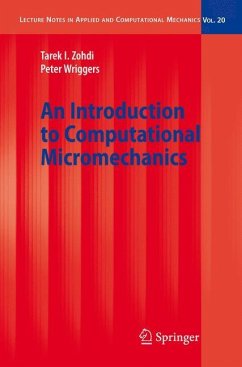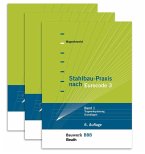In this, its second corrected printing, Zohdi and Wriggers' illuminating text presents a comprehensive introduction to the subject. The authors include in their scope basic homogenization theory, microstructural optimization and multifield analysis of heterogeneous materials. This volume is ideal for researchers and engineers, and can be used in a first-year course for graduate students with an interest in the computational micromechanical analysis of new materials.
The recent dramatic increase in computational power available for mathematical modeling and simulation promotes the significant role of modern numerical methods in the analysis of heterogeneous microstructures. In its second corrected printing, this book presents a comprehensive introduction to computational micromechanics, including basic homogenization theory, microstructural optimization and multifield analysis of heterogeneous materials. "An Introduction to Computational Micromechanics" is valuable for researchers, engineers and for use in a first year graduate course for students in the applied sciences, mechanics and mathematics with an interest in the computational micromechanical analysis of new materials.
The recent dramatic increase in computational power available for mathematical modeling and simulation promotes the significant role of modern numerical methods in the analysis of heterogeneous microstructures. In its second corrected printing, this book presents a comprehensive introduction to computational micromechanics, including basic homogenization theory, microstructural optimization and multifield analysis of heterogeneous materials. "An Introduction to Computational Micromechanics" is valuable for researchers, engineers and for use in a first year graduate course for students in the applied sciences, mechanics and mathematics with an interest in the computational micromechanical analysis of new materials.
From the reviews:
"This is a concise, well-written book ... . The author's staggering scheme with adaptive time steps, insensitive to the order in which the equations governing individual processes are solved, is described here and it is illustrated by an example. The book is suitable for a graduate course ... ." (George J. Dvorak, Meccanica, Vol. 44, 2009)
"This is a concise, well-written book ... . The author's staggering scheme with adaptive time steps, insensitive to the order in which the equations governing individual processes are solved, is described here and it is illustrated by an example. The book is suitable for a graduate course ... ." (George J. Dvorak, Meccanica, Vol. 44, 2009)








